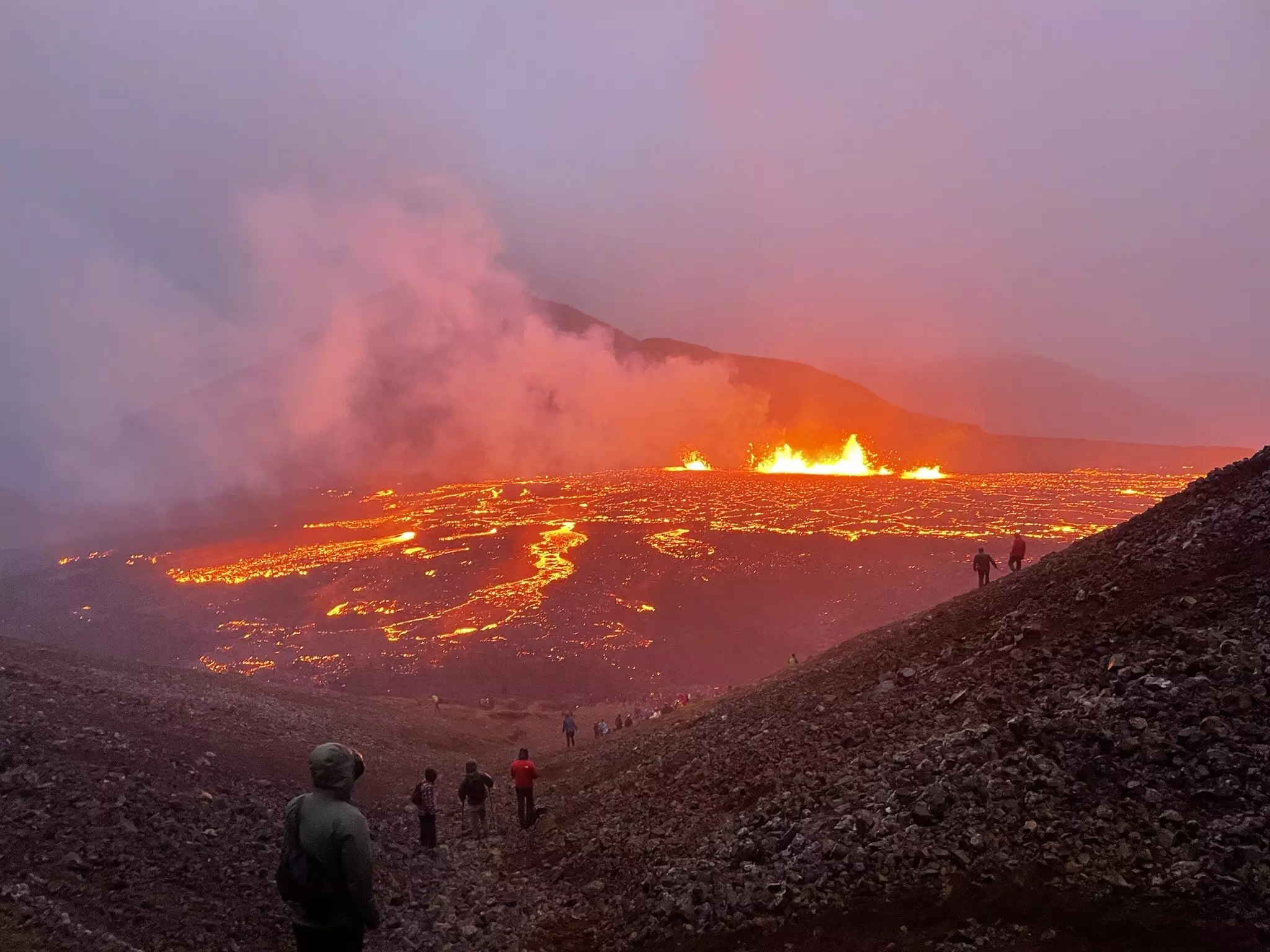Recent research led by geologists at UC San Diego’s Scripps Institution of Oceanography has dramatically reshaped our understanding of how volcanic eruptions can initiate. The focus of their investigation is the Fagradalsfjall volcano on Iceland’s Reykjanes peninsula, which erupted spectacularly beginning in 2021. Unlike previous assumptions that suggested magma rose directly from the mantle to trigger the eruption, this groundbreaking study reveals that substantial magma pooling occurred beneath the surface prior to the eruption. This finding is not merely a revision of previous beliefs; it represents a pivotal moment in the field of volcanology.
This research was not conducted in isolation but is part of a broader examination of volcanic activity taking place globally. The Scripps team, including undergraduate student Savannah Kelly, analyzed basaltic lavas not only from Iceland but also from recent eruptions in La Palma, Canary Islands, and Mauna Loa in Hawai’i. Their comprehensive approach provided a unique lens through which to observe volcanic activity, emphasizing the necessity of long-term monitoring and geochemical sampling.
The Role of Geochemistry in Volcanic Research
At the heart of this study lies the innovative use of isotopes, particularly osmium. The isotopic composition of this element serves as a powerful tool for discerning the processes that occur beneath a volcano. Lead researcher James Day articulated the method’s effectiveness by comparing it to monitoring a person’s health through blood tests—regular sampling and analysis reveal underlying conditions and changes over time. By examining the osmium isotopes present in the early lava flows of the Fagradalsfjall eruption, the team was able to trace back substantial contamination from the Earth’s crust, challenging the previously held notion that the eruptions originated only from mantle sources.
The implications of these findings are profound. They suggest that magma pooling and its interaction with crustal materials could be a common precursor to volcanic activity, a concept critical in assessing potential volcanic hazards. The Fagradalsfjall volcano’s eruption is not merely an isolated incident but may serve as a representative model for understanding future volcanic developments both in Iceland and around the globe.
A Shift in Paradigms: From Surface Eruptions to Deep Interactions
One of the most striking revelations from this research is the timeline of volcanic activity as denoted by the composition of the ejected lavas. The study indicated that the first lavas erupted in 2021 were indeed influenced by crustal materials, while lavas produced in subsequent eruptions appeared to be largely untainted by crustal interaction. This shift suggests a complex evolution in the feeding dynamics of the volcano over time, where initial conditions influenced the trajectory of volcanic behavior.
This nuanced understanding reshapes our perception of volcanic “fires.” What once appeared to be purely surface phenomena are revealed to have deep, intricate origins beneath the Earth’s crust. Each advance in understanding fuels further inquiries; it is now necessary to examine whether such mechanisms at play in Iceland are representative of volcanic systems worldwide. This could lead to enhanced predictive capabilities for eruptions, which is crucial for protecting communities in volcanic regions.
Broader Implications for Volcanic Hazards and Community Safety
As volcanic eruptions can have catastrophic effects on surrounding communities, the importance of this research cannot be understated. If we can understand the mechanisms behind eruptions better, we can develop improved forecasting models that anticipate volcanic activity. The current findings suggest that certain volcanic eruptions may exhibit more complexity than previously assumed; thus, monitoring systems must adapt to consider magma dynamics that include both mantle sources and crustal interactions.
Day, who is committed to continuing the study of volcanic activity, highlights the longevity of the eruptions on Iceland’s Reykjanes peninsula. Such long-lived volcanic systems serve as vital laboratories for understanding volcanic behavior and hazards over time. In doing so, scientists can accumulate a wealth of knowledge that might one day translate into lifesaving strategies for populations living in the shadow of these spectacular, yet dangerous, geological phenomena.
Rethinking Volcanology’s Future
The research coming out of Scripps Institution of Oceanography could catalyze a significant shift in how volcanoes are studied, emphasizing a comprehensive understanding of geological processes rather than isolated events. By framing the molten lavas as the “blood” of the Earth, scientists can explore deeper, building an intricate picture of subsurface interactions that inform wider geological patterns and potential hazard forecasting.
Such revelations not only enhance scientific literature but also enrich our collective understanding of the Earth’s dynamics, demonstrating the beautiful complexity that exists beneath our feet. As methodologies continue to advance, the future of volcanology looks promising, with the potential to greatly improve the intersection of science and community safety.


Leave a Reply